Breast Conservation
Did you know that removing a breast cancer with an adequate margin or rim of normal breast tissue (lumpectomy and preserving the breast) followed by radiation has the same survival as a mastectomy (complete removal of the breast tissue)?
Many women with fear are either told by a doctor or elect to have the breast removed. It isn’t wrong to have the breast removed if that decision is an informed decision, or in some instances is required, but the survival is still the same. With the increased use of mammograms, many breast cancers are quite small. For many women a lumpectomy is a viable option.
To learn more and understand if this is the right option for you please contact us today.
Breast Conservation Surgery (Click to view images)
Please note: results may vary for each patient.
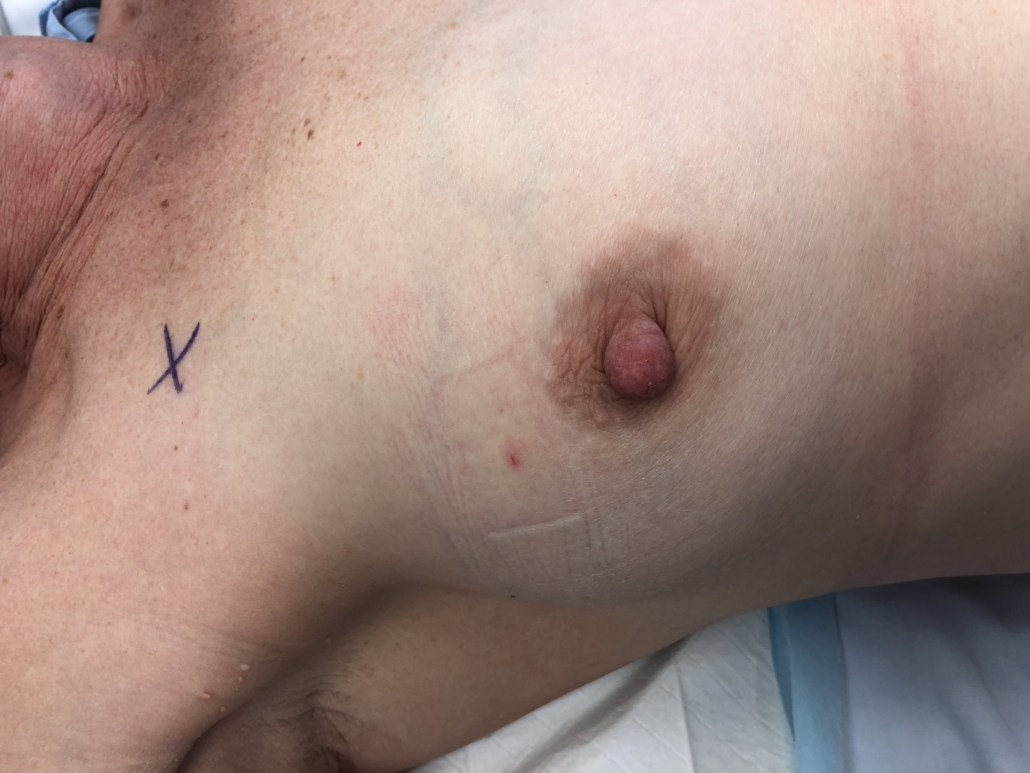
BEFORE – BREAST CONSERVATION SURGERY
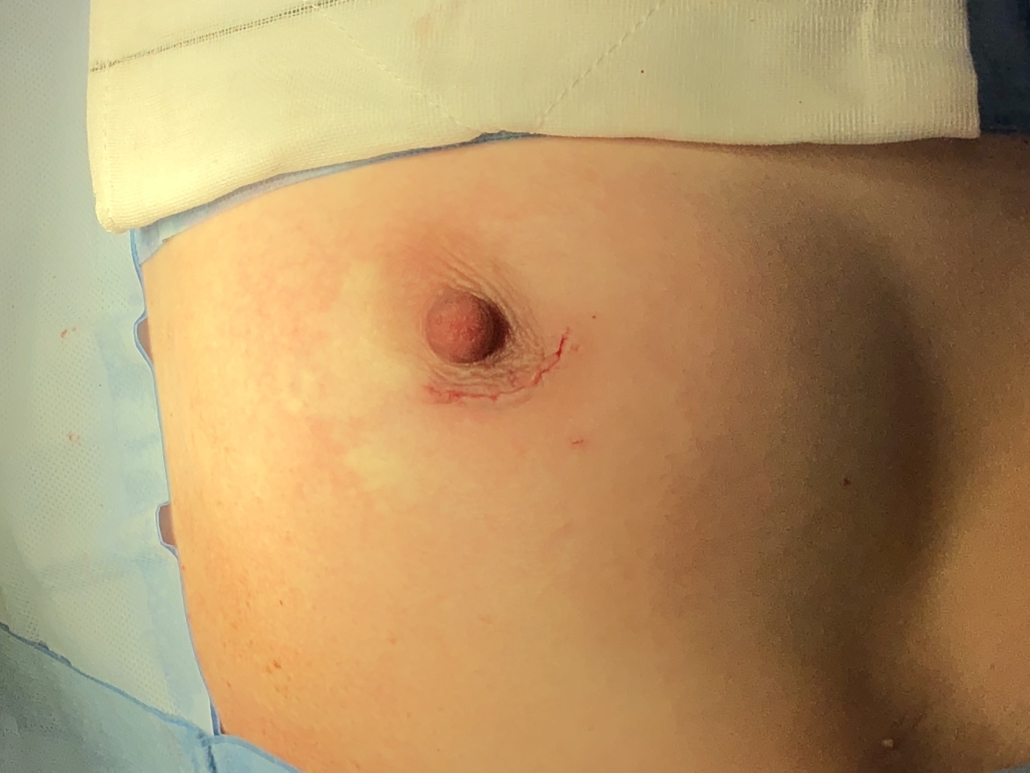
AFTER – BREAST CONSERVATION SURGERY
Breast Implant Removal
Some women decide after having breast implants for several years to have them removed for various reasons (implant rupture, hardening of the implants, etc…). However, a rare condition, called Breast Implant Associated Anaplastic Large Cell Lymphoma (abbreviated as BIA-ALCL) is a form of T-cell lymphoma that occurs after patients have breast implants. It is NOT breast cancer but rather a cancer of the immune system. The TGA (Therapeutic Goods Administration) has decided to take regulatory action in relation to all un-implanted breast implants and tissue expanders sold in Australia. If your implants have been cancelled, suspended or recalled it is NOT advised to have them removed unless you have concerning symptoms.
The main symptoms of BIA-ALCL are swelling, presence of a mass or pain in the breast in the area of the implant. These symptoms may and often occur three to fourteen years after implant placement. The most common symptom of swelling is associated with excessive fluid accumulation around the breast implant. The diagnosis is made by draining the fluid with a small needle for testing. It is a treatable condition. If you would like to learn about BIA-ALCL go to https://tga.gov.au or contact your surgeon.
If you require additional information please contact us today to discuss concerns and options.
Breast Reconstruction
Australia has one of the lowest breast reconstruction rates in comparison to the UK and the US. Only 1 of 10 women having a mastectomy will have breast reconstruction in comparison to 3 of 10 in the UK and 5 of 10 in the US. For Australian women, it is important to understand your options at the time of diagnosis, especially breast reconstruction. The success of reconstruction depends on the success of the mastectomy and the type of mastectomy (see mastectomy to learn more).
There are several breast reconstruction options, and these can be separated into two main categories, implant-based (using an implant) or autologous based (using your own tissue). There are advantages and disadvantages to either, as well as, several factors that influence the best option for you.
Below are examples of implant-based reconstruction options using skin sparing mastectomy with subpectoral reconstruction (the implant behind the muscle), nipple sparing mastectomy with subpectoral reconstruction, and nipple sparing with pre-pectoral reconstruction (implant in front of the muscle). Either reconstruction category, offer a variety of options.
Dr. Dauway performs implant-based reconstruction and works with a team of plastic surgeons that offer tissue based autologous reconstruction. To learn more about breast reconstruction and if this is the right option for you, please contact us today for more information.
Breast Reconstruction Surgery (Click to view images)
Please note: results may vary for each patient.
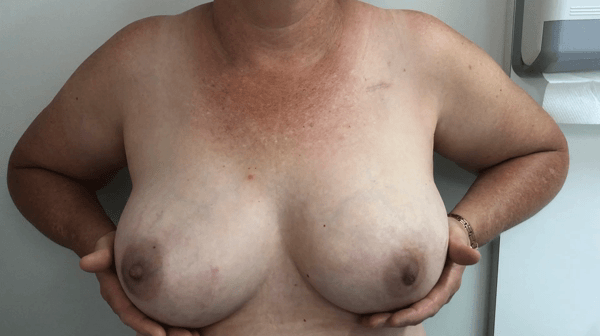
Postoperative bilateral nipple sparing mastectomies with immediate reconstruction. Please note: results may vary due to individual patient factors.
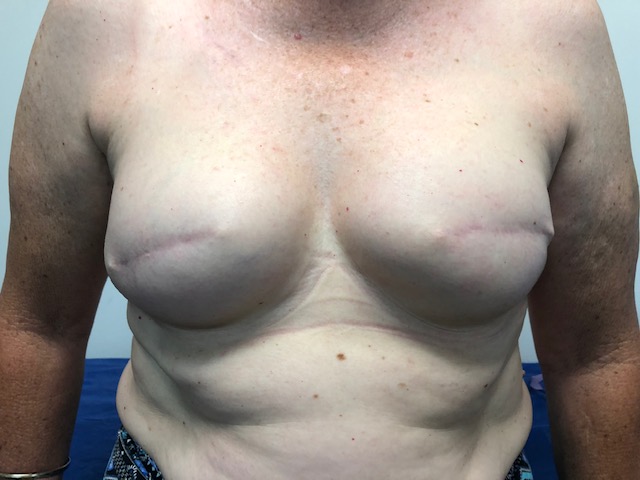
Skin Sparing mastectomies with immediate implant reconstruction
Oncoplastic Surgery
Often with aging, a woman’s breast shape and lift is affected by pregnancy, breast feeding and gravity. She may develop what is called ptosis or a drooping breast. When a woman with these breast features has breast cancer, she may be a candidate for oncoplastic surgery. Onco (cancer) and plastic (cosmetic) is a merger of surgical oncologic principles with those of plastic surgery.
Preoperative markings are done for surgical planning and to achieve symmetry. Usually, patient is discharged the following day with mild bruising which resolves shortly after a week as shown below. Oncoplastic surgery removes the breast cancer with adequate margins of normal breast tissue, while preserving the breast with a reasonable cosmetic outcome and often with improvement of the overall appearance of the breast.
To learn more about oncoplastic breast surgery for breast cancer and whether this is the best option for you, please contact us today.
Oncoplastic Surgery (Click to view images)
Please note: results may vary for each patient.

PATIENT 1 – AFTER ONCOPLASTIC SURGERY Photo 2

PATIENT 1 – AFTER ONCOPLASTIC SURGERY
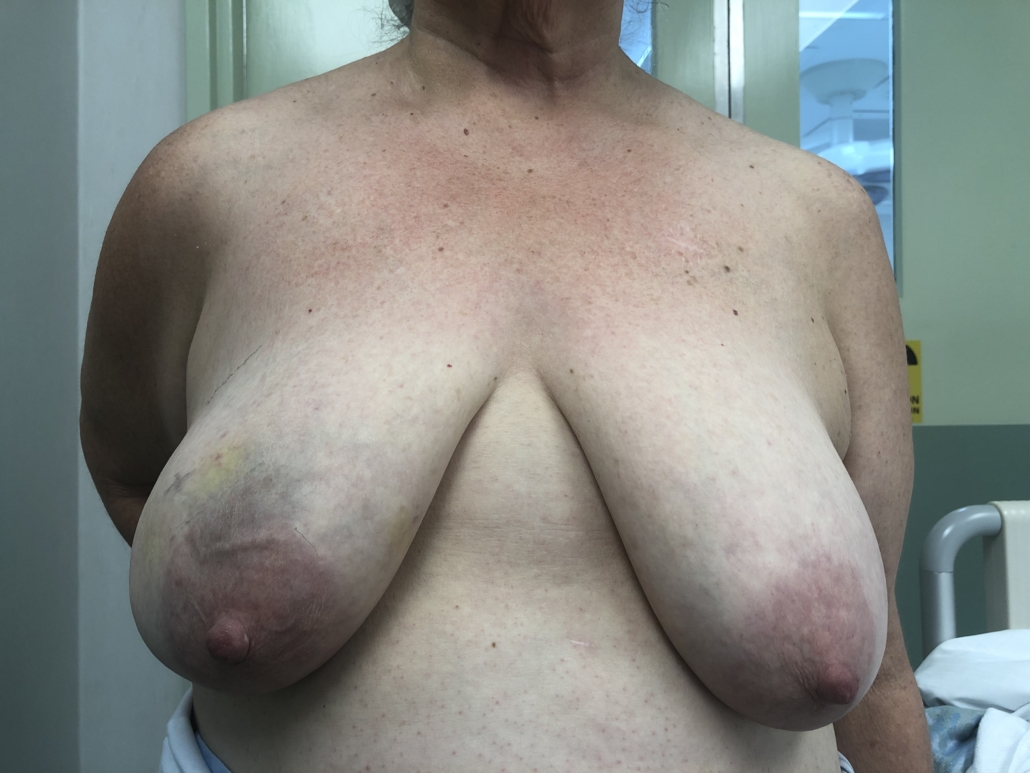
PATIENT 2 – BEFORE ONCOPLASTIC SURGERY
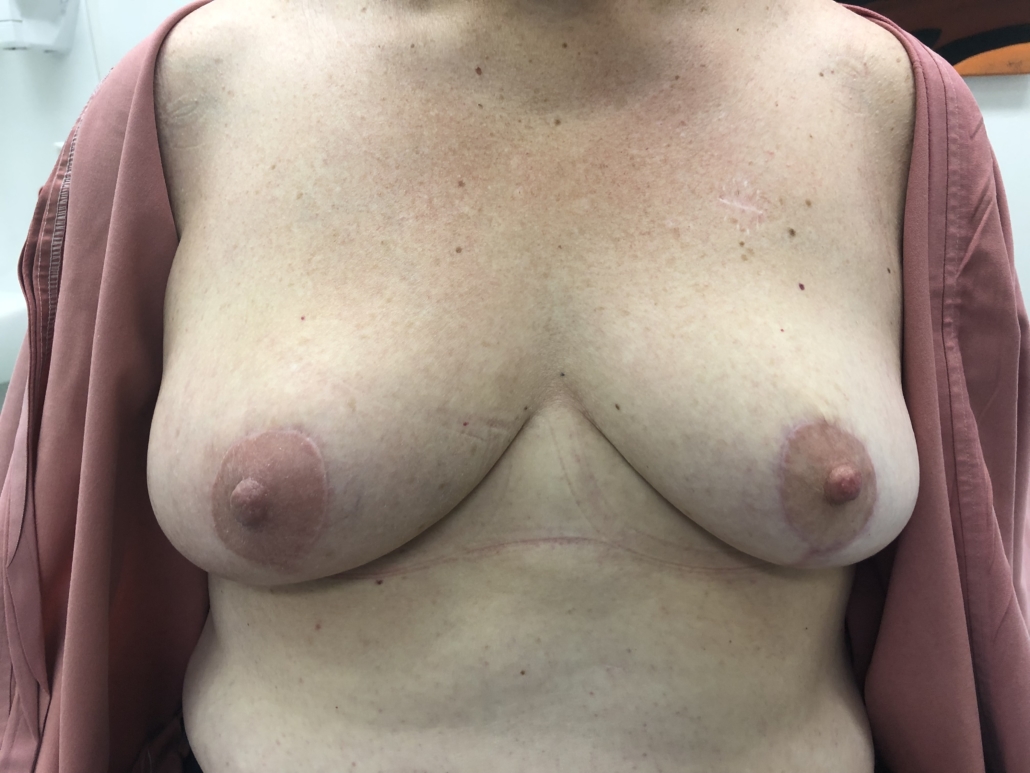
PATIENT 2 – AFTER ONCOPLASTIC SURGERY
Dr Emilia Dauway
By incorporating yoga and mindfulness in her surgical practice, Dr Emilia Dauway empowers women to live without fear through mindful living.
